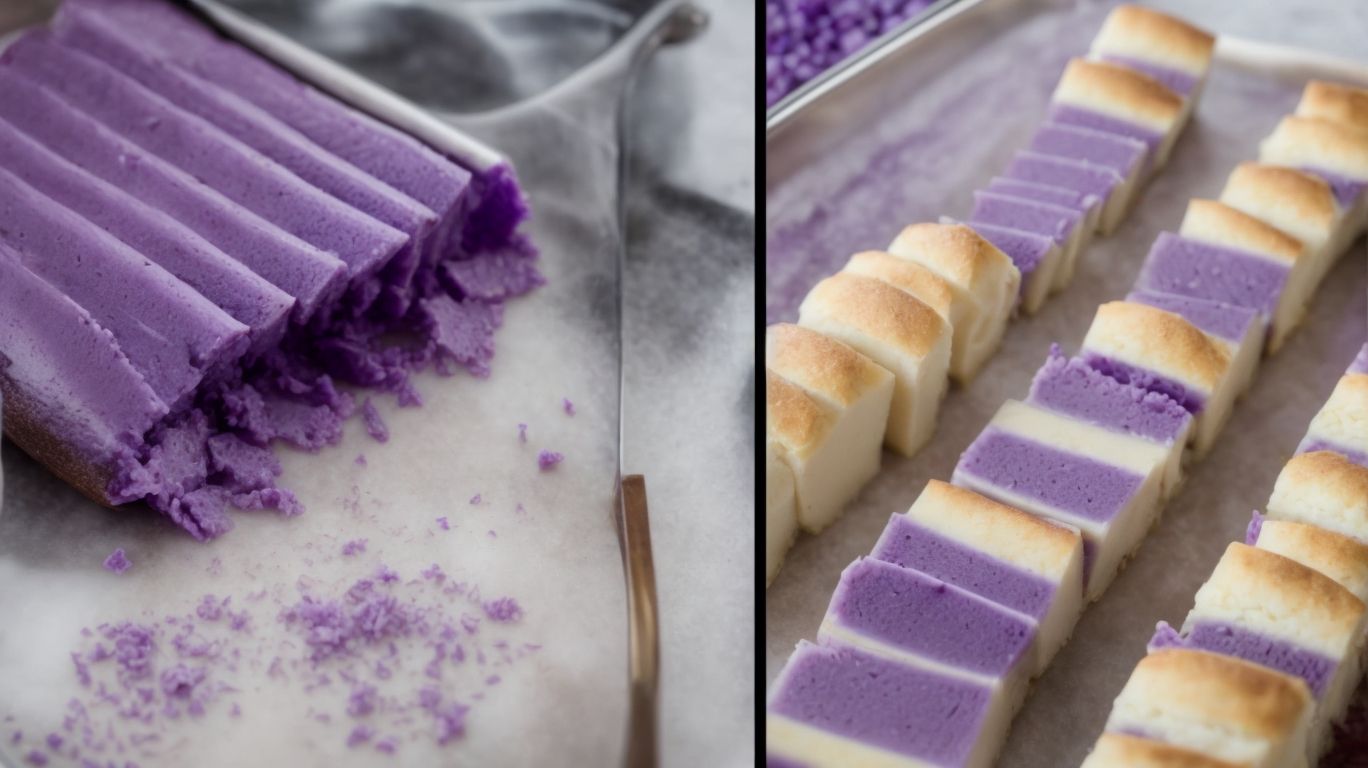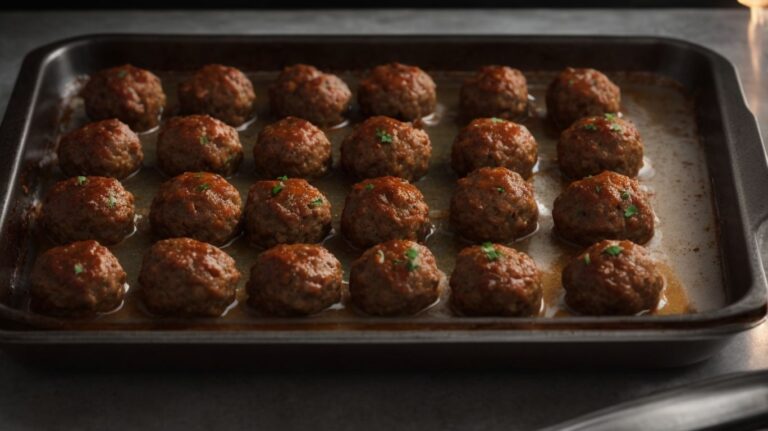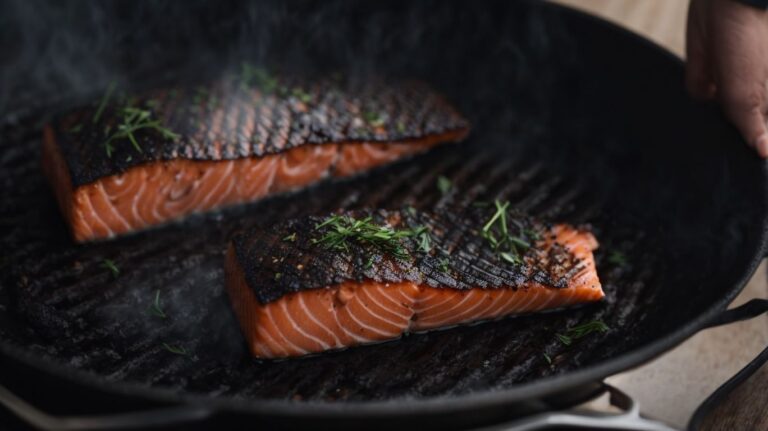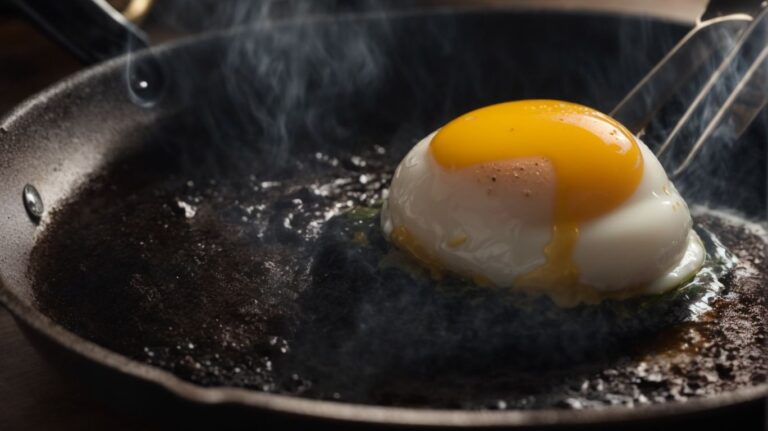How to Cook Ube Halaya?
Have you ever tried Ube Halaya? This sweet and creamy Filipino dessert is made from the vibrant purple yam known as Ube.
In this article, we will explore the ingredients needed for Ube Halaya and provide you with a step-by-step guide on how to cook this delicious treat.
We will share some tips and tricks for achieving the perfect consistency and flavor, as well as variations of Ube Halaya.
Stay tuned to learn how to serve and store this delectable dessert!
Key Takeaways:
What is Ube Halaya?
Ube Halaya is a traditional Filipino dessert known for its vibrant purple color and delightful taste.
Originally made from purple yam, also known as ‘ube’, this sweet treat has been a beloved part of Filipino cuisine for generations.
The process of making Ube Halaya involves cooking mashed purple yam with coconut milk, sugar, and sometimes butter to create a creamy, rich texture.
The unique flavor profile of ube is often described as a combination of sweet and earthy, making it a versatile ingredient in both sweet and savory dishes.
In Filipino culture, Ube Halaya is a popular dessert served during special occasions such as birthdays, holidays, and family gatherings, symbolizing unity and celebration.
Ingredients for Ube Halaya
The key ingredients for making delicious Ube Halaya include ube jam, coconut milk, condensed milk, and evaporated milk.
Ube jam, the star of this Filipino purple yam dessert, provides the vibrant color and distinct earthy sweetness to the halaya. It’s essential for capturing the signature flavor of this traditional treat.
- Coconut milk adds a creamy richness and a hint of tropical flavor, complementing the ube’s unique taste.
- Condensed milk contributes a touch of sweetness and helps create a smooth, luscious texture in the halaya.
- Evaporated milk enriches the dessert with a deeper dairy flavor, balancing out the sweetness from the other ingredients.
What is Ube?
Ube, also known as purple yam, is a root vegetable widely used in Filipino cuisine for its naturally creamy texture and distinct purple color.
Ube is characterized by its vibrant purple hue, which adds not only a unique visual appeal but also an exotic flavor to dishes.
Its versatile nature allows it to be used in both sweet and savory dishes, from ube halaya (a sweet jam-like dessert) to ube ice cream, cakes, and traditional Filipino stews.
Rich in vitamins, minerals, and antioxidants, purple yam offers numerous health benefits, such as improving digestion and boosting immune function.
What Other Ingredients are Needed?
Along with ube, other essential ingredients for Ube Halaya are creamy coconut milk, sweet condensed milk, and rich evaporated milk.
To further enhance the flavors and textures, you can also add vanilla extract for a subtle hint of sweetness and aroma. The butter gives a rich and creamy undertone to the dessert, balancing the earthy sweetness of ube. A pinch of salt helps to intensify the flavors and bring out the natural sweetness of the dish. Combining these ingredients with the vibrant purple hue of the ube creates a visually stunning and irresistibly delicious dessert.
Step-by-Step Guide on How to Cook Ube Halaya
Follow this step-by-step guide to learn how to cook a delicious batch of Ube Halaya that promises to be a crowd-pleaser.
Start by selecting fresh ube (purple yam) to ensure the best flavor for your halaya. Wash and peel the ube, then chop them into evenly sized pieces. Boil the ube until they are soft and tender. Once cooked, drain the water and mash the ube into a smooth paste.
In a separate pan, combine coconut milk, sugar, and the mashed ube over low heat. Stir continuously to prevent burning and ensure a smooth texture. Cook the mixture until it thickens and reaches the desired consistency. This process requires patience and careful monitoring to achieve the perfect balance of flavors.
Step 1: Preparing the Ube
The first crucial step in making Ube Halaya is preparing the ube by peeling, boiling, and mashing it to achieve a smooth and creamy texture.
Once you have peeled the ube, cut it into small cubes for easier boiling. Place the cubed ube in a pot of boiling water and cook until it is soft and fork-tender. This is a critical step as overcooking can result in mushy ube.
After boiling, drain the excess water and start mashing the cooked ube. Use a potato masher or a fork to create a smooth consistency, ensuring there are no lumps.
Step 2: Making the Ube Halaya Mixture
Next, create the Ube Halaya mixture by cooking the prepared ube with coconut milk, condensed milk, and butter over gentle heat until it turns sweet and creamy.
Begin by heating a pan over a low flame, adding the ube, coconut milk, condensed milk, and a generous amount of butter. Let the ingredients meld together, infusing the mixture with flavors.
As the mixture simmers, the ube transforms into a vibrant purple hue, releasing its natural sweetness. Stir gently to ensure even cooking and prevent any sticking or burning.
Continue cooking until the Ube Halaya thickens to a smooth, luscious consistency, captivating with its rich aroma and velvety texture. This process requires patience and attention to detail.
Step 3: Cooking the Ube Halaya
Cook the Ube Halaya mixture until it thickens and reaches the desired consistency, transforming into a luscious purple yam jam that embodies the essence of Filipino dessert-making.
As the Ube Halaya simmers, the vibrant purple color intensifies, indicating the concentration of flavors and sugars. Stirring methodically is crucial during this stage to prevent uneven cooking or burning. The mixture gradually darkens and thickens, releasing the rich aroma of ube, a sweet and earthy fragrance that fills the kitchen. Testing the viscosity by drawing a line on the pan that doesn’t immediately blend back signifies its readiness. This final step elevates the Ube Halaya from a simple mixture to a velvety, indulgent jam ready to be savored with each spoonful.
Tips and Tricks for the Perfect Ube Halaya
Enhance your Ube Halaya with these expert tips and tricks to achieve the perfect consistency, flavors, and taste every time.
When making Ube Halaya, consistency plays a crucial role. To achieve that luscious, creamy texture, it’s essential to cook the purple yam mixture slowly over low heat, stirring constantly to avoid burning.
For enhanced flavors , consider infusing coconut milk or condensed milk for a richer taste profile. You can also experiment with adding a touch of vanilla extract or pandan essence to elevate the overall taste.
Taste variations can be explored by incorporating ingredients like macapuno strings, grated cheese, or even crushed nuts for added texture and flavor complexity.
How to Achieve the Right Consistency?
Achieving the right consistency for your Ube Halaya is key to creating a smooth, easy-to-spread texture with a vibrant purple hue that delights the senses.
To reach this ideal consistency, start by preparing your ube mixture by cooking and mashing the purple yam until it is smooth and free of lumps. One technique to ensure a velvety texture is to use a fine mesh sieve to remove any remaining fibrous bits. Adding a precise amount of condensed milk and coconut milk will not only enhance the richness but also contribute to the creamy, luxurious finish of the dessert.
Another tip for achieving the perfect consistency is to cook the mixture over low heat, stirring continuously to prevent scorching. This gradual cooking process allows the flavors to meld, resulting in a silky-smooth texture that is easy to spread. Remember to stir in one direction to avoid the formation of clumps and ensure a uniform distribution of the ingredients.
How to Enhance the Flavor?
Elevate the flavor profile of your Ube Halaya by incorporating hints of nuttiness and floral aromas, such as jasmine, to create a unique and delightful taste experience.
Infusing your Ube Halaya with nutty nuances like roasted hazelnuts or almonds can add a rich and earthy undertone that complements the sweet ube flavor.
For a touch of floral elegance, consider steeping dried jasmine flowers in the coconut milk used in the halaya mixture. This delicate infusion will impart a subtle floral essence that balances beautifully with the richness of the purple yam.
By combining these elements, you can create a Ube Halaya that tantalizes the palate with layers of flavor, showcasing the exquisite harmony between nutty depth and floral sweetness.
What are Some Variations of Ube Halaya?
Explore creative variations of Ube Halaya by incorporating different dishes, adjusting sugar levels, and experimenting with rich and creamy additions to tailor the dessert to your preferences.
For a lighter option, consider reducing the sugar content in your Ube Halaya recipe for a more subtle sweetness. Alternatively, you can pair Ube Halaya with a scoop of creamy vanilla ice cream to create a delightful contrast of flavors and textures.
To elevate the dish further, try adding a dollop of whipped coconut cream or a sprinkle of toasted coconut flakes for an added tropical twist. Embracing experimentation opens up a world of possibilities for transforming this Filipino favorite into a versatile and innovative dessert.
Serving and Storing Ube Halaya
Discover the best practices for serving and storing your freshly made Ube Halaya to preserve its flavor and texture.
Regarding serving Ube Halaya, consider presenting it in elegant dessert bowls topped with a sprinkle of toasted coconut flakes or a dollop of whipped cream for added visual appeal. The vibrant purple color of Ube Halaya will surely catch your guests’ eyes and make for a stunning presentation.
To store leftovers, transfer the Ube Halaya into an airtight container, ensuring no air exposure to maintain its freshness. Refrigeration is ideal for short-term storage, while freezing in portions can extend its shelf life for a few months.
How to Serve Ube Halaya?
Indulge in the delightful flavors of Ube Halaya by serving it as a topping for cheesecakes, incorporating it into baking recipes, or sourcing fresh ingredients from your local Filipino store for an authentic experience.
When pairing Ube Halaya with cheesecakes, the velvety purple sweetness contrasts beautifully with the creamy tanginess of the cheesecake, creating a luscious flavor combination that will tantalize your taste buds.
For baking applications, consider using Ube Halaya in cakes, cupcakes, or pastries to infuse a unique Filipino twist into your desserts.
To ensure the utmost authenticity of your Ube Halaya dish, head to a Filipino store where you can find fresh ube (purple yam) and other essential ingredients specific to this delectable Filipino delicacy.
How to Store Ube Halaya?
Ensure the longevity of your Ube Halaya by storing it in an airtight container, following essential food safety precautions, and considering freezing for extended preservation.
When storing Ube Halaya in an airtight container, make sure the container is clean and dry to prevent any moisture buildup that could lead to spoilage. Also, it’s advisable to divide the Ube Halaya into smaller portions before storing to make it easier to thaw and consume only what you need. For optimal freshness, store the container in a cool, dark place away from direct sunlight and heat sources. Freezing Ube Halaya is another effective method to extend its shelf life; simply place it in a freezer-safe container, ensuring there is minimal air inside to prevent freezer burn.
Frequently Asked Questions
How to Cook Ube Halaya?
What ingredients do I need to cook Ube Halaya?
Can I use frozen ube for this recipe?
How long does it take to cook Ube Halaya?
Can I make Ube Halaya ahead of time and store it?
What are some creative ways to use Ube Halaya in recipes?
How to Cook Ube Halaya?
To cook Ube Halaya, you will need to gather some fresh ube, coconut milk, condensed milk, and butter. Boil the ube until soft, then mash it with the other ingredients until it thickens. Cook it over low heat for about 20 minutes, stirring constantly.
What ingredients do I need to cook Ube Halaya?
The main ingredients for Ube Halaya are fresh ube, coconut milk, condensed milk, and butter. You can also add in some vanilla extract for additional flavor, and some food coloring to give the halaya a vibrant purple hue.
Can I use frozen ube for this recipe?
Yes, you can use frozen ube for this recipe. Just make sure to thaw it completely and drain any excess water before using it. This may also affect the cooking time, so keep an eye on the consistency of the halaya as it cooks.
How long does it take to cook Ube Halaya?
It typically takes about 20 minutes to cook Ube Halaya, but this may vary depending on the heat and consistency you desire. It’s important to keep stirring it constantly to prevent burning and to achieve a smooth texture.
Can I make Ube Halaya ahead of time and store it?
Yes, you can make Ube Halaya ahead of time and store it in the fridge for up to a week. Just make sure to keep it in an airtight container and reheat it over low heat before serving.
What are some creative ways to use Ube Halaya in recipes?
Ube Halaya can be used as a filling for pastries like empanadas or turnovers. You can also mix it into ice cream or use it as a topping for pancakes or waffles. Some people even use it as a spread for toast or as a dip for fruit. The possibilities are endless!




